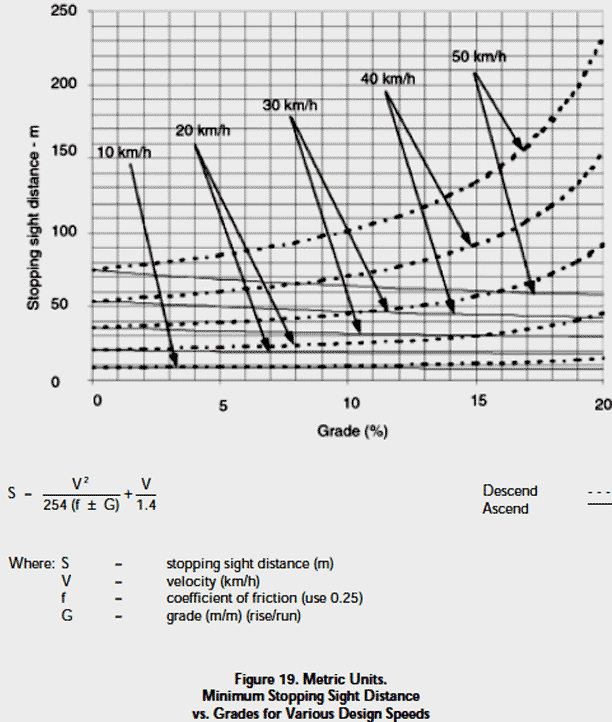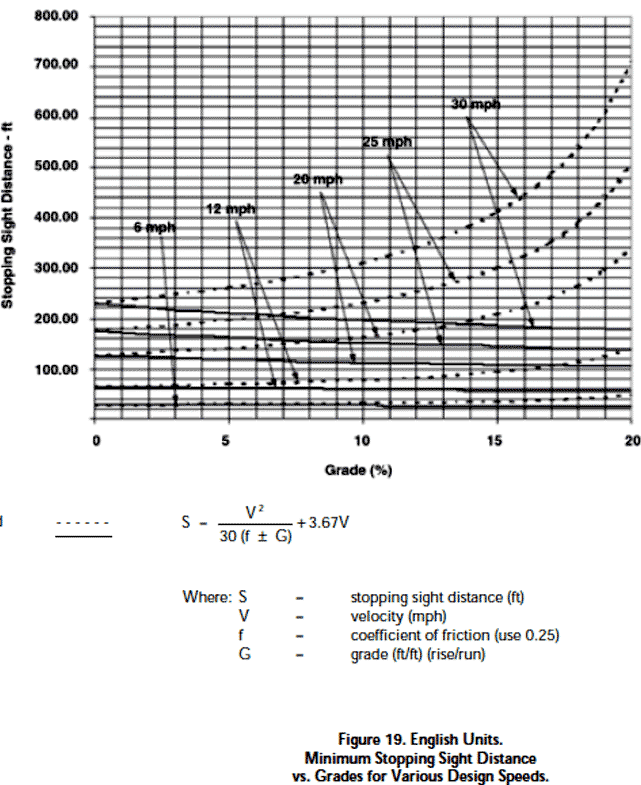Bicycle Brake Reaction Distance means the distance a bicycle travels, prior to applying the brakes, whilst a cyclist -
• sees a danger ahead;
• perceives what it means;
• decides on a response; and
• instigates that response by applying the brakes.
A cyclist who is concentrating
will have a Brake Reaction Time of about 2½ seconds to apply his/her brake levers in an emergency situation. By using the Bicycle Brake Stop Calculator, if the cyclist is travelling at 40 km p/h which equates to 11.11 metres p/s, the Bicycle Brake Response Distance would be 27.78m.A Bicycle Brake Reaction Time of 2½ seconds, which has been used in “Guide for the development of bicycle facilities” by the 'American Association of state highway and transportation officials', is the mode Bicycle Brake Reaction Time used in most bicycle modelling.


|
On a two wheeled vehicle, you cannot jam the brakes on for a 'full' in an
emergency stop.
You have to achieve weight transfer first. This means an initial gentle
application of the brake before a big squeeze. If you jam them on
instantaneously without moving the body weigh backwards, ideally over the
seat, the front end can go out from under you, particularly if you have powerful
brakes like hydros.
Also on a bike, when braking heavily you'll find that you subconsciously lift
off the brakes momentarily as you cross bumps etc on the road surface (eg
cracks, manhole covers etc). This is to stop the wheel locking as it is
unweighted over the bumps. In a car this isn't necessary.